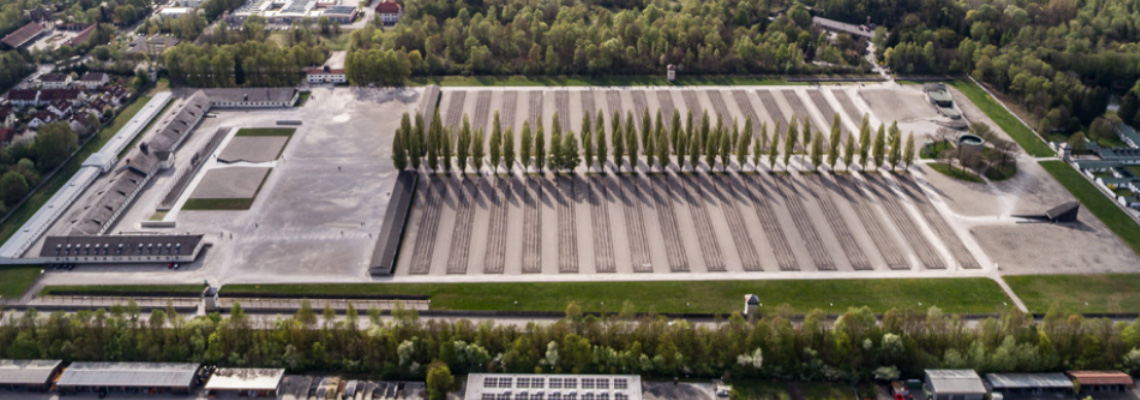Historical Site and Memorial Site
On March 22 1933, the Nazi regime opened a concentration camp on the grounds of the disused Königlich Bayerische Pulver- und Munitionsfabrik Dachau, a defunct factory complex that once produced gunpowder and ammunition. This prison and place of terror existed for twelve years. More than 200,000 prisoners from over 40 nations were imprisoned in the Dachau concentration camp and its subcamps; at least 41,500 persons died here of hunger and illness, from the torture they suffered, were murdered, or perished from the consequences of their imprisonment.
After U.S. Army units had liberated the prisoners on April 29 1945, the American military government used the former prisoner camp as a Displaced Persons camp. From July 1945, the grounds served as an internment camp for suspected Nazi perpetrators; in 1948, the Bavarian state government set up a refugee camp. Thanks to the initiative of the survivors, who had joined forces in 1955 to form the Comité International de Dachau (CID), it proved possible to turn the onetime prisoner camp into a place of commemoration and remembrance. The Dachau Concentration Camp Memorial Site, featuring a documentary exhibition, opened in May 1965.
In 1997 work commenced on redeveloping the Dachau Concentration Camp Memorial Site. A new main exhibition was opened in 2003. The leitmotif of the exhibition, still to be seen today, follows the “path of the prisoners”. The fate of those persecuted is documented, covering their arrival, their lives in confinement, the suffering and dying in the camp through to liberation.
In 2003 the Bavarian state government handed over responsibility for the Memorial Sites at both Dachau and Flossenbürg to the newly-founded Stiftung Bayerische Gedenkstätten. It is the task of the Foundation to maintain and develop the Memorial Sites as international places of learning and remembrance for future generations.
To the present day, it is the goal of the Dachau Concentration Camp Memorial Site to remember the suffering and death of the prisoners, and to facilitate and foster analysis and discussion of Nazi crimes. In the following, a chronological survey presents the most important events in the history of the Dachau concentration camp and the various uses of the grounds after 1945.

